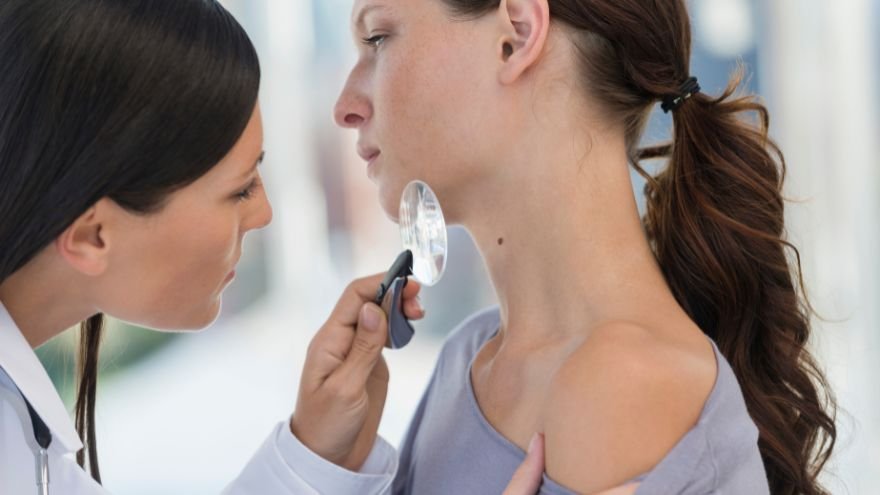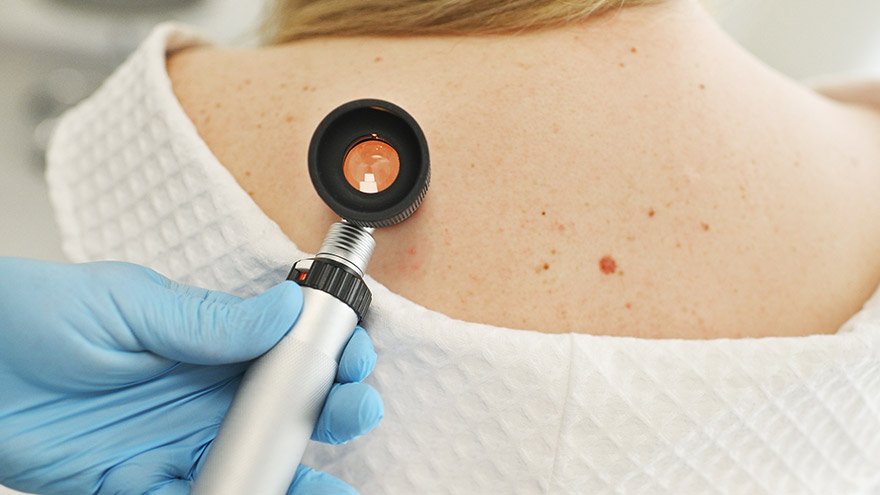
Sunspot or Skin Cancer? Spot the Difference

Sunspots, also known as lentigos, are flat brown spots that develop on your skin from exposure to the sun. While sunspots are noncancerous, it’s essential to understand what a sunspot is, compared to birthmarks or, more seriously, skin cancer. We spoke with Dr. Angela Walker, a Dermatologist at Renown Health, to understand how to distinguish a sunspot and when to see a dermatologist.
Sunspot or Skin Cancer?
Sunspots typically appear on areas of the skin that have had the most exposure to sunlight, such as the face, hands, or arms, while skin cancer can appear anywhere on the body. Sunspots are flat and smooth to the touch, and do not grow or change over time. Skin cancers do not have a functional “off switch." These tumors grow and change progressively, looking larger or more atypical as they grow. They can start flat or show up as a raised bump on the skin.
Sunspots are:
Harmless brown spots that appear due to sun exposure and are typically flat against the skin. Sunspots do not require medical attention. They are a normal feature of the skin in response to UV exposure and time. Cosmetic services may be helpful to remove or lighten these temporarily.
Skin cancer spots are:
- Sometimes subtle, though sometimes very atypical in appearance. They can develop anywhere on the body, even in areas that don’t receive sun exposure. If a spot is growing and changing and looks less and less normal as it grows, it is concerning.
- Moles that are flat or raised and show features like an increase in size, a change in appearance, irregular borders, asymmetry, or uneven colors should be evaluated by a medical professional.
It’s important to understand that whenever you are in doubt, you can always consult a medical professional or see your dermatologist. When detected early, the 5-year survival rate for melanoma is 99 percent, according to the Skin Cancer Foundation.
When to Get Checked for Sunspots
If you notice new brown spots or changes in the size, shape, or color of existing spots, it’s recommended that you speak with your primary care provider or dermatologist. Additionally, any itching, bleeding, or pain without known trauma, rubbing, or scratching of a site should be promptly discussed with a medical professional.
General Dermatologist Recommendations for Skin Checks
Dermatologists recommend practicing regular checks on yourself, starting from your head to your toes. Self-examinations can help alert you to changes in your skin and lead to early skin cancer detection. Learn more about how to spot skin cancer with the A-B-C-D-Es here.
Most healthy adults can see their dermatologist every two to three years for a complete skin check. However, you should see a dermatologist more often if you notice changes in your skin, have a history of skin cancer or have additional risk factors.
Removing Sunspots
Some people may choose to help fade or remove sunspots depending on their appearance preferences. Discuss with your dermatologist about safe and effective ways to minimize the appearance of sunspots.
Skin Cancer Screening

Related Blogs


3 Radiant Reasons to Say Yes to a Facial Peel
